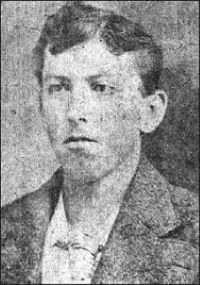by Susan Peters, Dundas County Archives

Every once in a while, a story surfaces that creates a huge sensation. It makes one realize that the sleepy little community had a very deep undercurrent. One such story took place in what was then West Winchester. The story was reported in newspapers from New York City and Toronto.
In 1879, West Winchester was still a small community with a population of only 700. It was not for another decade that the name became Winchester. If that was not confusing enough, the name of the original town of Winchester was changed to Chesterville in 1865.
The patriarch of the Brown family, Robert, had been born in Scotland, but arrived in the area in 1845, along with the throngs of immigrants eager for a new life in Upper Canada. His wife, Lydia, was also born in Scotland, and settled with her family on a farm near Metcalfe. By 1879, they had been married for 23 years. They had a 21-year-old son, Clark; Charles was 17, and they had two young daughters; Adeline aged 12, and Winnifred aged 8. Clark had been married for 8 months to Melvina. They all lived together in the large farmhouse.
On the fateful night of September 2, 1879, Robert was exhausted, as he had spent the day harrowing the fields. His eldest son, Clark, had been in his bed all day with a debilitating headache, and had been suffering greatly with these headaches for months. Robert went to lie down after his dinner. Charles took Clark’s wife Melvina to visit her parents’ farm near Metcalfe, so they were out of the home that evening.
The events that happened next were horrific, but the details altered, depending on who was telling the story. By all accounts, Robert had encountered an individual who had attacked him with an axe. It was a bloody ordeal, and he did not survive. Unfortunately, 12-year-old Addie was an innocent victim, sustaining massive wounds to her head. While all this was happening, Lydia ran out of the farmhouse to tell neighbours of the situation. It just so happened that most of the neighbouring farms were all members of the extended Brown family.
While Clark originally claimed a stranger came to the house to battle them with an axe, he eventually confessed that he was the murderer. During the trial that ensued in Cornwall, it was apparent that this family had many secrets, and the undercurrent was one of dysfunction. Clark had motive, as he had learned that his father had multiple mortgages on the farm. Clark had wanted to have part of it signed over to his name. Apparently, his little sister was just in the wrong place at the wrong time. We also learned that Clark was accused of poisoning his brother earlier in the year, and possibly others as well.
Of course, before the development of forensics, hearsay and accusations were pretty much all one could go with in a trial that was reported as far away as the New York Times. Between Clark’s confession and the witness accounts, it was enough to convict Clark and he was hanged in Cornwall October 25, 1879. None of the Brown family was there at the end, other than Lydia and Melvina.
The trial and execution drew large crowds, some of whom had traveled quite a distance to partake in the events. It was almost a circus. After all, this was the first public execution in Cornwall in over 43 years. Clearly, there was still discord within the Brown family as, in a matter of months, Lydia’s brother-in-law had her charged for complicity in the murders.
An inquest took place in Morrisburg. The prosecuting attorney was James P. Whitney, a Morrisburg lawyer who later became Premier of Ontario. While there was much salacious testimony against Lydia, in the end she was discharged, and the charges were dropped. But you can be pretty sure that her brother-in-law was off her Christmas gift list. While this brought no joy for any members of this family, for us, this story is a great asset. It provides a vivid window into the world of West Winchester in 1879.

